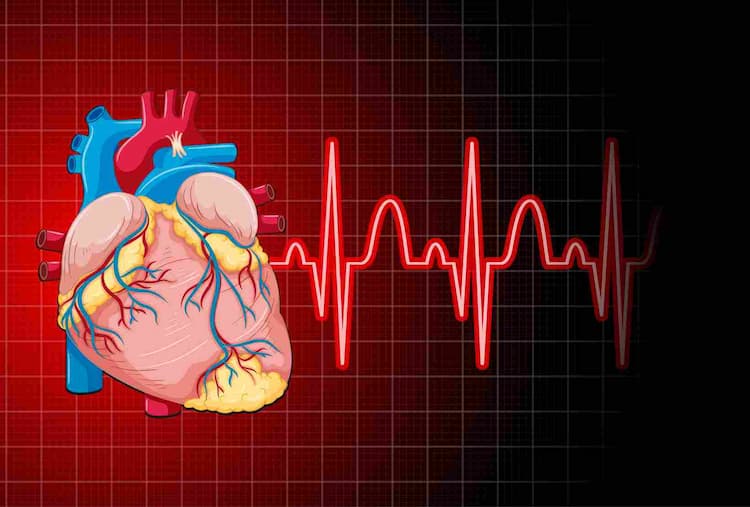Angina (Ischemic Chest Pain) Symptoms

Medically Reviewed By
Dr. Ragiinii Sharma
Written By Prekshi Garg
on Jul 14, 2022
Last Edit Made By Prekshi Garg
on Mar 16, 2024

The incidence of heart disease is on a steep rise, and one of the main reasons behind it is the lack of prioritization of the early signs and symptoms. Angina, otherwise known as Ischemic Chest Pain, is an early sign of coronary heart disease.
The condition is quite common in patients with risks of cardiovascular complications. The sharp, jabbing pain happens due to a significantly reduced blood flow to the heart. Most patients experiencing angina report feeling a squeezing, tightness, and heaviness around the chest when the pain hits.
Given how severe the condition can turn without proper treatment, we will highlight everything there is to know about angina symptoms and ways to mitigate the condition.
What are the Types of Angina?
Angina is quite a common occurrence in patients with coronary heart disease. However, most people often forego the signs, thinking it’s a repercussion of indigestion. Experiencing unexplained chest pain is the first trigger of angina symptoms in women.
That said, let us walk you through the four important types of Angina and what they signify.
Stable angina
It is considered the most common and less severe type, wherein the pain exerts from excessive exercise or exertion on the body. The pain generally subsides on its own or with the prescribed angina medication the patient is on. These episodes are short-lived and last about a few minutes only.
Unstable angina
Being mindful of the unstable angina symptoms is crucial. The pain often hits when a person is at rest and isn’t exerting any physical burden. Prolonged unstable angina can typically starve the heart of oxygen and lead to a heart attack. This can last up to 20 minutes and requires medical attention.
Variant angina
This is the type of angina caused by muscle spasms in the heart. It isn’t a consequence or early sign of coronary heart disease. The sudden spasms restrict optimal blood flow to the heart, leading to pain and discomfort. It typically happens at night or when a person is resting.
Refractory angina
This involves the frequent and recurrent angina episodes in patients on angina medications. It indicates poor coronary functions and requires immediate medical attention.
What are the Symptoms of Angina?
The angina pain symptoms typically involve two factors – a sharp, jabbing pain and discomfort on the chest.
Most people who experience angina report feeling a heaviness on the chest when such an episode hits. The pain from angina sometimes trickles down the other body parts, too, including the jaw, neck, arms, and even the shoulders.
Besides these, a patient might also complain about feeling:
- Dizzy
- Nauseous
- Fatigued
- Shortness of breath
- Profuse sweating, etc.
While the symptoms of stable angina last for a few seconds to a minute, unstable angina is what most people need to be wary of. If the patient is expressing newer symptoms and the discomfort doesn’t get better with medications, chances are that it could be an early sign of a heart attack. Getting immediate medical help is crucial to avoid any fatalities.
Is Angina different in Women than in Men?
When discussing the angina signs and symptoms, you will often come across a subtle difference in how they manifest.
The symptoms of angina might be different in women than the standard symptoms we just discussed. This is one of the reasons why people often end up not paying much attention to the symptoms and going on with their lives.
Besides the standard chest pain and discomfort, women experiencing angina might also report other symptoms like:
- Persistent discomfort in the neck and jaw area
- Shortness of breath
- Sharp pain in the back
- Stomach pain
- Nausea
- Stabbing pain in the chest region
If the pain lasts over 5 minutes, it is typically a sign of unstable angina. This can lead to risks of a heart attack if immediate medical interventions aren’t provided. So, if you notice the episode not getting better, call an ambulance immediately.
What are the Common Causes of Angina?
As we said, angina attack symptoms generally show coronary heart disease. But, that’s not the only contributing factor. Typically, the symptoms can be an outcome of the following three causes.
Coronary artery disease (CAD)
CAD is a severe cardiovascular complication due to excess deposition of plaques (fat deposits) in the arteries supplying in and out of the heart. The persistent build-up of plaque generally leads to atherosclerosis, which leads to narrowing or hardening of the arteries. This leads to restricted blood flow to the heart.
Coronary microvascular disease (MVD)
A more prevalent cause affecting women, MVD, occurs when there is potential damage to the walls of the arteries supplying the heart. The condition leads to restricted or poor blood flow to the heart, leading to symptoms of angina in the patient. The microvascular angina symptoms are often prolonged and need immediate medical attention.
Coronary spasms
A contributing factor to variant angina is when the coronary arteries continually constrict and open up. The constriction of the blood vessels restricts the optimal blood flow, further leading to pain and discomfort in the chest.
Several risk factors contribute to the onset of angina, including:
- Anemia
- High cholesterol levels
- Heart failure
- Diabetes
- Hypertension
- Hypertrophic cardiomyopathy
- Obesity
- Valve disease, etc.
Keeping a check on these risk factors and introducing the rightful lifestyle changes is crucial to prevent the onset of angina or regress it in patients with pre-existing complications.
What are the Warning Signs of Heart Attack following Angina?
As we mentioned, unstable angina can later lead to a heart attack if the normal blood flow to the heart isn’t restored. Patients experiencing an angina attack for over 5-7 minutes should be rushed to the hospital for further medical assistance to recover from the impacts on the heart.
Some of the warning signs from angina that indicate a potential heart attack are:
- Feeling pressure, fullness, and heaviness in the chest
- Feeling a sharp, stabbing pain in the chest
- Pain that extends down the arm, neck, and shoulders
- Lack of consciousness
- Nausea and vomiting
- Feeling an impending sense of doom
- Shortness of breath
- Pain in the upper abdominal region
- Profuse sweating
These symptoms typically mean that the person is or will have a heart attack. Getting immediate medical intervention is thus crucial.
How is Angina Diagnosed and Treated?
If your angina is recurrent and persistent, your doctor will likely start with a physical examination after listening to the symptoms. Generally, they will also assess your medical history to get a better understanding of what’s wrong.
Besides that, further testing is necessary to reach a conclusive diagnosis. These tests include:
- Complete blood count
- Chest X-ray
- Echocardiogram
- Electrocardiogram
- CT-scan
- MRI
- Coronary angiogram, etc.
Depending on the reports, your doctor will be able to reach a diagnosis and then start you on the best treatment plan as needed.
The treatment options typically start with prescribed medications like:
- Cholesterol-lowering drugs
- Anti-clotting drugs
- High blood pressure medications
- Vasodilators
If medication isn’t enough to manage the symptoms, your doctor will suggest further treatment options like coronary angioplasty, stenting, coronary bypass grafting surgery, etc.
FAQs
What is the fastest way to cure angina?
The fastest way to cure angina is with medications that restore the blood flow to the heart. However, if the angina symptoms in men and women don’t improve after that, it could indicate an incoming heart attack, which needs immediate medical attention.
What are the 3 types of angina?
The three primary types of angina include stable angina, unstable angina, and variant angina.
How do they test for angina?
There is no specific test for angina. However, your doctor will prescribe a few different blood tests and imaging tests to determine the reason for angina.
Conclusion
The symptoms of angina are quite debilitating and painful. Given that angina symptoms are often an early sign of a possible heart attack or coronary disease getting tested is necessary. If the stabbing pain is persistent and recurrent, don’t take it for granted. It is always safer to get comprehensive testing done to avert the worst outcomes in the future.



